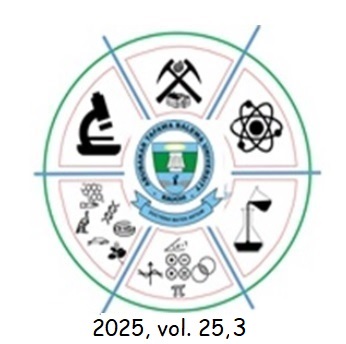Sedimentological, Facies Architecture and Palaeoenvironmental Reconstruction of Ajali and Mamu Formations exposures in Iyale and Agbenema, Northern Anambra Basin, Nigeria
Keywords:
Facies Architecture, Palaeoenvironment, Ajali Formation, Mamu Formation, Anambra BasinAbstract
This study provides an integrated investigation of the sedimentology, facies architecture,
and palaeoenvironmental evolution of the Ajali Sandstone and Mamu Formation in the northern
Anambra Basin, southeastern Nigeria. Detailed fieldwork along the Iyale–Agbenema corridor
combined stratigraphic logging, granulometric analysis, petrographic studies, and heavy
mineral characterization with facies classification and palaeoenvironmental reconstruction.
The Ajali Sandstone is composed predominantly of medium– to coarse–grained, poorly sorted
quartz arenites, characterized by prominent cross-bedding, flaser structures, herringbone
cross-stratification, and Skolithos burrows. Grain-size parameters, C–M patterns, and linear
discriminant functions collectively indicate deposition in tidally influenced fluvial–deltaic
systems, shaped by alternating phases of high-energy braided river discharge and nearshore
marine reworking. Petrographic evidence, complemented by heavy mineral assemblages
enriched in zircon, tourmaline, and rutile, suggests high textural maturity and points to
multicycle sediment recycling sourced from uplifted basement complexes and recycled
sedimentary terranes. In contrast, the Mamu Formation is dominated by laminated clays,
siltstones, shales, and ferruginised horizons bearing root traces and plant debris. These
facies reflect deposition within lower delta plain to prodelta environments, marked by
fluctuating redox conditions, quiet-water sedimentation, and episodic subaerial exposure.
Together, the Ajali–Mamu successions capture the complex interplay of Late Cretaceous
transgressive–regressive cycles in southeastern Nigeria, where proximal braided fluvial
systems repeatedly prograded into coastal plain and shallow marine environments. The
integration of sedimentological, petrographic, and provenance data highlights this succession
as a key stratigraphic archive for reconstructing basin evolution, sediment dispersal
pathways, and palaeoenvironmental dynamics within the Benue Trough system. Overall, these
findings refine existing depositional models and underscore the controlling role of tidal–fluvial
interactions in shaping the sedimentary architecture of paralic basins during the Late
Cretaceous.
Downloads
Downloads
Published
Issue
Section
License
Copyright (c) 2025 Journal of Pure and Applied Sciences (Science Forum)

This work is licensed under a Creative Commons Attribution-NonCommercial-ShareAlike 4.0 International License.




